Safe workwear is an essential component of ensuring the well-being and protection of workers in various industries. It encompasses an array of specialized clothing and personal protective equipment (PPE) designed to safeguard workers from potential hazards, accidents, injuries, and illnesses in the workplace. Whether it’s in construction, manufacturing, healthcare, or any other high-risk working environment, proper safety attire plays a crucial role in mitigating risks and promoting a safe working environment. This summary will provide an overview of safe workwear, including its importance, types of protective clothing, regulations, and considerations for choosing appropriate attire. It will also discuss emerging trends and technological advancements in the field of workwear safety. Importance of Safe Workwear: Safe workwear serves multiple purposes, highlighting its significance in various industries. Here are some key reasons why safe workwear is vital: 1. Hazard Protection: Appropriate workwear offers protection against specific workplace hazards such as chemical spills, fire, radiation, electricity, sharp objects, extreme weather conditions, and biological hazards. For instance, flame-resistant clothing is crucial in industries where workers may come into contact with fire or intense heat.
safety ware
 2. Injury Prevention: Workwear that includes protective elements like helmets, safety goggles, gloves, and steel-toed boots can help minimize the risk of workplace injuries, including head injuries, eye injuries, hand injuries, and foot injuries. For instance, construction workers wear hard hats to protect themselves from falling debris. 3. Compliance with Regulations: Many industries have specific safety regulations that require workers to wear appropriate protective gear. Non-compliance can result in legal consequences and potential harm to employees. Complying with safety standards ensures businesses are operating ethically and prioritize employee well-being. 4. Enhanced Worker Confidence and Productivity: When workers feel safe and reassured by protective workwear, their confidence is boosted, leading to increased productivity and efficiency in the workplace. Feeling protected can also reduce stress and improve overall job satisfaction. Types of Safe Workwear: Safe workwear encompasses a wide range of protective clothing and equipment designed to address specific workplace hazards and ensure worker safety. Some common types of workwear include: 1. High-Visibility Clothing: Industries such as construction, road construction, and security require high-visibility clothing. These garments feature brightly colored fabrics with reflective strips or patches to make workers more visible and reduce the risk of accidents in low-light conditions.
2. Injury Prevention: Workwear that includes protective elements like helmets, safety goggles, gloves, and steel-toed boots can help minimize the risk of workplace injuries, including head injuries, eye injuries, hand injuries, and foot injuries. For instance, construction workers wear hard hats to protect themselves from falling debris. 3. Compliance with Regulations: Many industries have specific safety regulations that require workers to wear appropriate protective gear. Non-compliance can result in legal consequences and potential harm to employees. Complying with safety standards ensures businesses are operating ethically and prioritize employee well-being. 4. Enhanced Worker Confidence and Productivity: When workers feel safe and reassured by protective workwear, their confidence is boosted, leading to increased productivity and efficiency in the workplace. Feeling protected can also reduce stress and improve overall job satisfaction. Types of Safe Workwear: Safe workwear encompasses a wide range of protective clothing and equipment designed to address specific workplace hazards and ensure worker safety. Some common types of workwear include: 1. High-Visibility Clothing: Industries such as construction, road construction, and security require high-visibility clothing. These garments feature brightly colored fabrics with reflective strips or patches to make workers more visible and reduce the risk of accidents in low-light conditions.
Specifications of safety ware
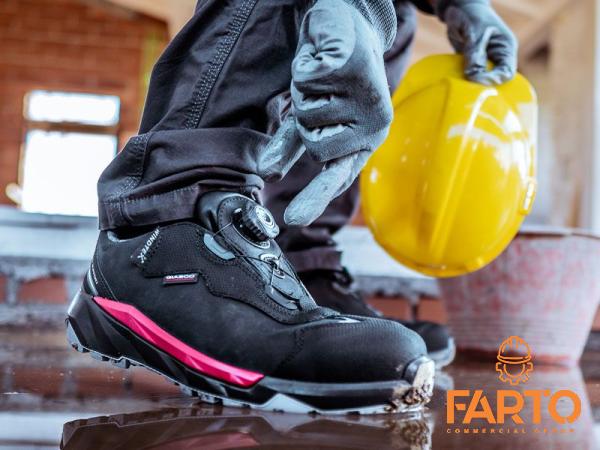 2. Protective Outerwear: Protective outerwear includes flame-resistant clothing, chemical-resistant suits, and insulated clothing. These garments provide protection against fire, extreme temperatures, chemicals, and hazardous materials. 3. Head Protection: Helmets, hard hats, and bump caps are essential for protecting workers from head injuries caused by falling objects, collisions, or electrical hazards. They are commonly required in construction, manufacturing, and utility industries. 4. Eye and Face Protection: Safety goggles, face shields, and protective glasses safeguard workers from flying debris, chemicals, and other potential eye and face hazards. Industries such as construction, welding, and healthcare rely on these protective items. 5. Hand and Arm Protection: Gloves and arm sleeves provide protection against cuts, abrasions, burns, chemicals, and biological hazards. Different types of gloves are available depending on the specific workplace hazards, such as cut-resistant gloves, chemical-resistant gloves, and heat-resistant gloves. 6. Foot Protection: Safety boots or shoes with reinforced toecaps, metatarsal guards, and slip-resistant soles are necessary to protect workers’ feet from heavy objects, electrical hazards, punctures, and slippery surfaces. Regulations and Standards:
2. Protective Outerwear: Protective outerwear includes flame-resistant clothing, chemical-resistant suits, and insulated clothing. These garments provide protection against fire, extreme temperatures, chemicals, and hazardous materials. 3. Head Protection: Helmets, hard hats, and bump caps are essential for protecting workers from head injuries caused by falling objects, collisions, or electrical hazards. They are commonly required in construction, manufacturing, and utility industries. 4. Eye and Face Protection: Safety goggles, face shields, and protective glasses safeguard workers from flying debris, chemicals, and other potential eye and face hazards. Industries such as construction, welding, and healthcare rely on these protective items. 5. Hand and Arm Protection: Gloves and arm sleeves provide protection against cuts, abrasions, burns, chemicals, and biological hazards. Different types of gloves are available depending on the specific workplace hazards, such as cut-resistant gloves, chemical-resistant gloves, and heat-resistant gloves. 6. Foot Protection: Safety boots or shoes with reinforced toecaps, metatarsal guards, and slip-resistant soles are necessary to protect workers’ feet from heavy objects, electrical hazards, punctures, and slippery surfaces. Regulations and Standards:
buy safety ware
 Various regulatory bodies, such as the Occupational Safety and Health Administration (OSHA) in the United States and the European Union’s Personal Protective Equipment (PPE) Regulation, enforce standards and guidelines governing safe workwear. These regulations provide guidance on proper selection, usage, maintenance, and disposal of protective clothing and equipment. Employers have a responsibility to ensure compliance with these standards to promote worker safety. Choosing Appropriate Safe Workwear: Selecting appropriate workwear involves considering several factors to ensure optimum protection and comfort for workers. Here are some key considerations when choosing safe workwear: 1. Identifying Hazards: Analyze workplace hazards to determine the type of protective clothing and equipment required. Each industry has specific hazards, and workwear should be tailored to address those risks effectively. 2. Fit and Comfort: Ensure workwear fits well and allows for ease of movement without compromising safety. Ill-fitting attire can impede performance and cause discomfort, leading to reduced productivity and increased risk of accidents. 3. Durability and Quality: Workwear should be robust and durable to withstand the demands of the job. High-quality materials and construction are essential for longevity, especially in industries with high wear and tear. 4. Visibility and Reflectivity: In jobs where visibility is crucial, choose workwear with high-visibility features such as reflective strips or bright colors to ensure workers can be easily seen. 5. Compliance with Standards: Ensure that selected workwear complies with relevant safety standards and regulations to guarantee maximum protection. Emerging Trends and Technological Advancements:
Various regulatory bodies, such as the Occupational Safety and Health Administration (OSHA) in the United States and the European Union’s Personal Protective Equipment (PPE) Regulation, enforce standards and guidelines governing safe workwear. These regulations provide guidance on proper selection, usage, maintenance, and disposal of protective clothing and equipment. Employers have a responsibility to ensure compliance with these standards to promote worker safety. Choosing Appropriate Safe Workwear: Selecting appropriate workwear involves considering several factors to ensure optimum protection and comfort for workers. Here are some key considerations when choosing safe workwear: 1. Identifying Hazards: Analyze workplace hazards to determine the type of protective clothing and equipment required. Each industry has specific hazards, and workwear should be tailored to address those risks effectively. 2. Fit and Comfort: Ensure workwear fits well and allows for ease of movement without compromising safety. Ill-fitting attire can impede performance and cause discomfort, leading to reduced productivity and increased risk of accidents. 3. Durability and Quality: Workwear should be robust and durable to withstand the demands of the job. High-quality materials and construction are essential for longevity, especially in industries with high wear and tear. 4. Visibility and Reflectivity: In jobs where visibility is crucial, choose workwear with high-visibility features such as reflective strips or bright colors to ensure workers can be easily seen. 5. Compliance with Standards: Ensure that selected workwear complies with relevant safety standards and regulations to guarantee maximum protection. Emerging Trends and Technological Advancements:
safety ware + buy and sell
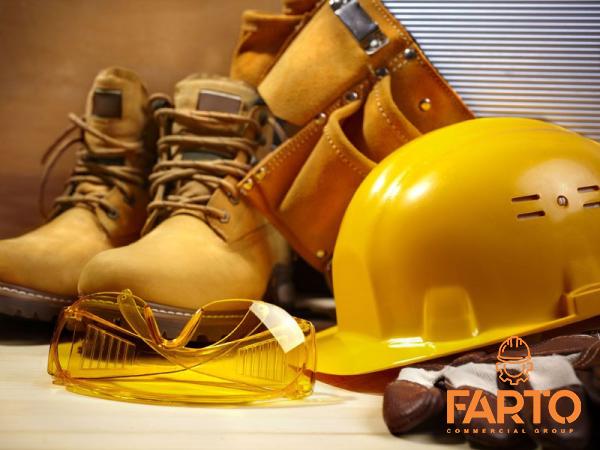 The field of safe workwear is continuously evolving, with advancements in technology driving innovation and improvements in protective clothing. Some emerging trends include: 1. Smart Workwear: Integration of wearable technology with workwear, such as embedding sensors and monitoring systems in garments, allows real-time tracking of vital signs, posture, environmental conditions, and potential hazards. 2. Lightweight and Breathable Materials: Innovations in fabric technology have led to the development of lightweight, breathable, and moisture-wicking materials that offer increased comfort without compromising safety. 3. Anti-Microbial and Anti-Viral Properties: In response to the COVID-19 pandemic, workwear manufacturers are developing garments with anti-microbial and anti-viral properties to reduce the spread of infectious diseases. 4. Ergonomic Design: Workwear is being designed with improved ergonomics to enhance worker mobility and reduce fatigue, making it more comfortable and safer to wear for extended periods. Conclusion: Safe workwear is of paramount importance in ensuring the well-being of workers across various industries. It provides protection against workplace hazards, minimizes the risk of injuries, ensures compliance with regulations, and boosts worker confidence and productivity. Choosing appropriate workwear involves considering factors such as hazard identification, fit and comfort, durability, and compliance with safety standards. As technology continues to advance, workwear is becoming smarter, more lightweight, and ergonomic, thereby providing enhanced protection and comfort for workers. Prioritizing safe workwear is not only essential for worker safety but also a responsible approach that contributes to a healthy and productive work environment.
The field of safe workwear is continuously evolving, with advancements in technology driving innovation and improvements in protective clothing. Some emerging trends include: 1. Smart Workwear: Integration of wearable technology with workwear, such as embedding sensors and monitoring systems in garments, allows real-time tracking of vital signs, posture, environmental conditions, and potential hazards. 2. Lightweight and Breathable Materials: Innovations in fabric technology have led to the development of lightweight, breathable, and moisture-wicking materials that offer increased comfort without compromising safety. 3. Anti-Microbial and Anti-Viral Properties: In response to the COVID-19 pandemic, workwear manufacturers are developing garments with anti-microbial and anti-viral properties to reduce the spread of infectious diseases. 4. Ergonomic Design: Workwear is being designed with improved ergonomics to enhance worker mobility and reduce fatigue, making it more comfortable and safer to wear for extended periods. Conclusion: Safe workwear is of paramount importance in ensuring the well-being of workers across various industries. It provides protection against workplace hazards, minimizes the risk of injuries, ensures compliance with regulations, and boosts worker confidence and productivity. Choosing appropriate workwear involves considering factors such as hazard identification, fit and comfort, durability, and compliance with safety standards. As technology continues to advance, workwear is becoming smarter, more lightweight, and ergonomic, thereby providing enhanced protection and comfort for workers. Prioritizing safe workwear is not only essential for worker safety but also a responsible approach that contributes to a healthy and productive work environment.




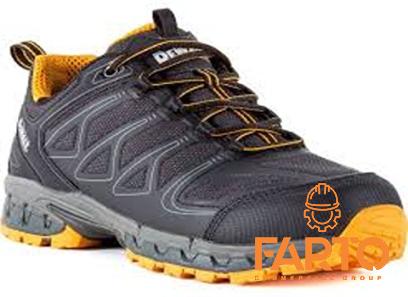



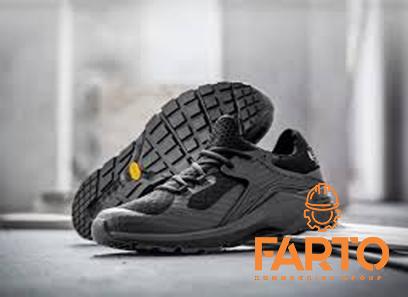
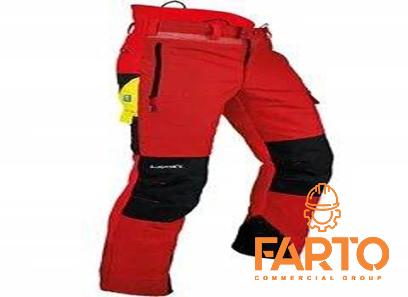
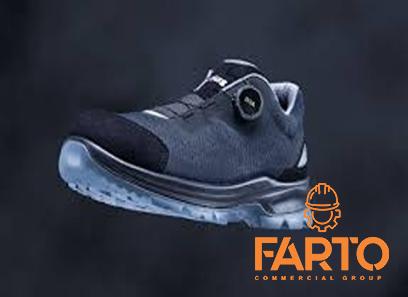
Your comment submitted.